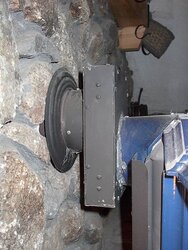No to the kaowool at home depot. Look up refractory or kiln supplies in the phone book, or if you have to ebay. You don't need much, just think about how you would seal things up and insulate while your installing the plate and add the insulation and stove joint sealing compound as needed. The stainless, along with stainless screws just seems to make sense to me.
If you insulated your liner, then you can use the leftover stuff from that. If you did not insulate the liner, then you are missing out. Especially with a chimney on an outside wall. I did not insulate my liner, and while my insert worked OK with no real problems, I should have, and ended up pulling my liner to insulate it a month or two ago. Man what a difference. Start ups are easier and faster, no problems with having to "warm up the flu" with newspaper (so far), and the draw is so much better. While it isn't really cold yet here in Michigan, I can tell the insert is working better, as my damper settings are different from last year telling me the insert draws better.
As mentioned earlier, you may need the insulation to meet the ul listing/rating, or for longevity of the liner, and/or the manufacturer of your liner may require it. As far as pulling it and insulating it this year? The answer I got last year was basically, "wait and see, if problems, then insulate". But looking back, I am glad I did.
As far as block off plate construction, pick up a cheapee Harbor freight 4 1/2 angle grinder like this one:
http://www.harborfreight.com/cpi/ctaf/displayitem.taf?Itemnumber=91223
And a couple of cut off wheels and flap discs. Now you can cut your sheet metal without distortion, and smooth out the cuts with the flap disc. While a cheap tool, it is handy and you will find yourself using it more and more often. Works good at cutting the hole, just go slow and make small cuts. KD




